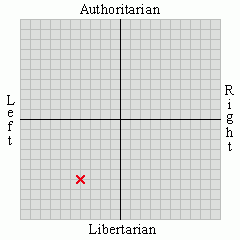Extended Twin-engined Operational Performance Standards, or ETOPS, are a series of standards that permit the operation of twin-engined airliners over much of the world's oceans.
Back in the day of piston-engined airliners, all of the major over-water airliners had four engines: Boeing 307, 314, 377; Douglas DC-4, -6, -7; Lockheed L-749/1049/1649; Sikorsky, Martin, etc., etc. If you flew over water, you had four engines. If you had fewer, then you were limited to as far as you could fly in 60 minutes with one engine out.
That was no guarantee of making land even with an engine out. For while it was fine if the engine failed and the crew feathered the propeller, if the prop could not be feathered, you were a long way from land pushing a very large flat plate through the air, as a windmilling prop creates a huge amount of drag. If that happened at the wrong place, the airplane was going to ditch in the ocean.
The Coast Guard maintained cutters at what were known as "ditching stations" between the mainland U.S. and Honolulu, Hawaii. And they were used. PanAm Flight 943 ditched in 1956, as did Pan Am Flight 6, both with no fatalities or serious injuries.
Jets changed that. First, jet engines quickly proved to be far more reliable than piston engines. Second, if a jet engine shuts down, there is not the chance of huge drag effects. Still, the early over-ocean jets had four engines: Comet, Boeing 707 and 747, Douglas DC-8, Vickers VC-10. The proven reliability of jets led the aviation authorities to waive the 60 minute rule for tri-engined jets, which is why the DC-10 and L-1011 operated on transoceanic flights.
By the end of the 1970s, there was a lot of interest by the airlines in operating twin-engined aircraft on oceanic routes. One of the reasons was fuel cost; jet fuel that cost pennies a gallon in the early 1960s was now a dollar a gallon or more. The second was crew costs; early transoceanic airliners required a flight deck crew of four or five (pilot, co-pilot, flight engineer [who was a real engineer, not a junior pilot], navigator and radio operator). Better radios and navigation gear made the radio operator and navigator positions superfluous. Twin-engined jets were simpler to operate, no flight engineer was needed. (Later advances in computer-controlled systems led to the abolishment of the flight engineer's position on the later models of the 747 and similar aircraft.)
The engines got more and more reliable and it came to pass that a typical airline pilot might never have to shut an engine off in flight other than in a training simulator. As the engines got better and the other systems improved and their reliability became proven, then Extended Range Operations (EROPS) came to pass, then morphed into ETOPS. The 60 minute rule became 90 minutes, then 120 minutes and now 180 minutes or 207 minutes.
Airports also had to be certified for the ability of airliners to land at them with one engine out and I've been told (privately) that some interesting computer modeling games were done in order to "prove" that some airports were capable of supporting ETOPS emergencies. (Keflavik is such an airport, or so I've been informed.)
So there you are, fat, dumb and happy in the middle of the ocean and an engine quits. You now have one engine and one airport within ETOPS range. As was recently shown by British Airways, the fact that one engine isn't working right does not mean that everything is hunky-dory with the other one. And let's not forget that the airlines have been outsourcing their maintenance to save a few bucks here and there (and if that fills you with confidence, I've got some swampland for sale).
Hence the unofficial full name of ETOPS: Engines Turn Or Passengers Swim.
It may be too late in the airline game to re-think ETOPS and consider going back to three or four engines for long-range flights over water.
But maybe it ought to be considered.
Is This Lawn-dering?
37 minutes ago











No comments:
Post a Comment